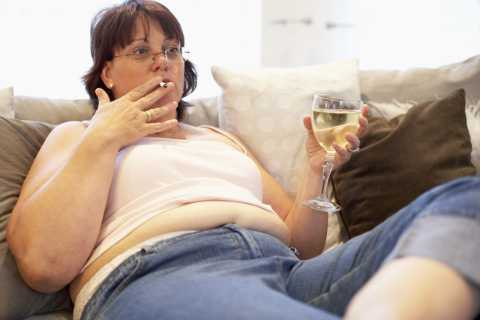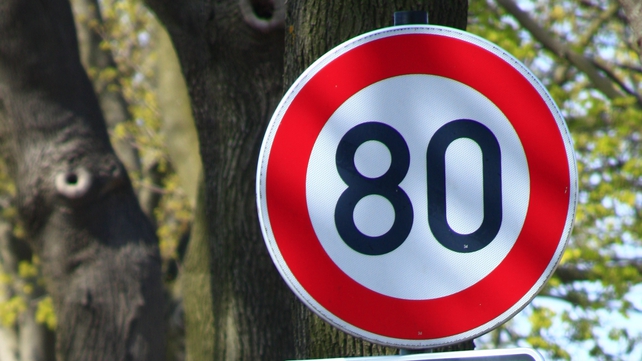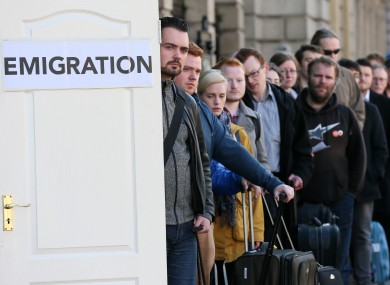Ireland top of the list of entrepreneurial countries
New study compiled by Wall Street Journal says country is outperforming European average
Ireland’s ability to attract venture capital funding even in a downturn has been highlighted by the Wall Street Journal study.
A new study has placed Ireland at the top of the list of Europe’s tech entrepreneurs in terms of country.
The list, which was compiled by the Wall Street Journal, looked at data from Dow Jones Venture Source on the total amount of venture capital by tech firms since 2003. That was sorted into countries, divided by population to come up with a figure per capita and averaged per quarter.
With an average deal size of $278.73 billion per capita, Ireland beat Sweden, the UK, Finland, Denmark, the Netherlands, Norway, France, Germany and Switzerland. The WSJ said the country beat the venture funding capital average per capita in the European free trade area, attracting four times as much funding. Sweden followed close behind with 3.7 times the average. There were 311 VC deals recorded since 2003, with 42 per cent of that figure since 2009.
At the other end of the table Croatia, Romania and Bulgaria.
However, Ireland’s success pales in comprison to other countries. Outside of Europe, Israel has managed to close 1,183 deals since 2003, with an average value of $1,092.52 per capita. The US, meanwhile, has closed 23,716 deals with a value of $660.41 per capita.
Health food poverty on the increase in Ireland
Joan Burton says social inequalities in Irish society have created a ‘health timebomb’
The number of people experiencing food poverty in Ireland could fill Croke park five times over, a conference has heard.
According to the charity Healthy Food for All, almost half a million people in the country are affected by food poverty which is defined as the inability to afford or access healthy food.
Healthy Food for All is an all-island charity seeking to address food poverty by promoting access, availability and affordability of healthy food to low income groups.
Dr Miriam Owens, public health specialist at the Department of Health pointed to research which shows that socially disadvantaged household consume less balanced diets and suffer from higher rates of diet related chronic disease such as diabetes, heart disease and obesity.
Speaking at the conference, Minister for Social ProtectionJoan Burton said that social inequalities within Irish society have created a “health timebomb”.
Ms Burton said a strong social protection system is a key protectant of health and that her Department would be spending around a quarter of a billion on family income supplement to support families on low incomes this year.
Ms Burton said ensuring a living wage for individuals and families is a key policy for her Department.
“As we exit the bailout, a living wage should be a dividend for people who have endured so much difficulties, reductions, cuts in expenditure and so on, during the period of the bailout from the time of the financial crash,” she said.
“The over riding policy of the Government is to increase employment but also to ensure as many individuals and families are on a living wage,” she said.
Ms Burton highlighted the importance of breakfast clubs in ensuring children get at least one nutritious meal a day.
She said they provided a social space for children and pointed to US research which showed that breakfast clubs aid cognitive development, improved educational outcomes and led to better rates of school attendance and participation.
Ms Burton said there is an additional €2 million from Budget 2013 to facilitate additional schools involvement in breakfast clubs and encouraged more DEIS schools to avail of the funding.
The conference also heard that one in five Irish children goes to bed or school hungry because there is not enough food in the house.
Healthy Food for All spokeswoman Marjo Moonen said that 13 per cent of children never have breakfast on weekdays. She said that while low income households may be aware of healthier options and had financial constraints, there are other factors at play.
“Can you get to the shop, can you make the right food choices or have the skills to prepare the food? These are issues that also need to be addressed,”said Ms Moonen.
New Irish rural speed sign changes on the way for 90,000 km of our roads
Leo Varadkar says too many motorists treat speed limit as a target rather than maximum
The introduction of a new rural speed limit sign is a tacit acceptance of the difficulties associated with trying to audit limits across the State’s 90,000 kms of regional and local roads. Ireland has more kilometres of roads per hectare than any other country in Europe.Minister for Transport Leo Varadkar said in too many cases motorists treat a speed limit as a target, rather than the maximum at which it is appropriate to travel if weather and other factors allow.
It will be interesting to see if these new signs satiate motorists’s calls for saner limits.
The change also seeks to shift much of the responsibility for driving at an appropriate speed on local and regional roads onto the motorist when all the evidence suggests enforcement is the most successful method of ensuring compliance.
There is also an element of trying to address an issue which has yet to be quantified. Those involved in the speed limit review group did not look at any actual speed limits to determine what proportion were appropriate.
The plan envisages all speed limits being reviewed by local authorities over the coming two years.
Conor Faughnan from AA Ireland said “absurd speed limits” created a culture where drivers start to ignore limits. “We have to correct those [absurd]limits and create a system people can buy into”, he said today.
It is unclear how drivers will be informed that speed limits on the route they are travelling on have been reviewed and is appropriate.
One of the main causes of speed limit inconsistency is the multiplicity of agencies involved in setting them, namely local authorities who determine limits on all roads in their area.
Mr Varadkar does not propose to change this, in part because of the practicalities of setting limits by dictat from a single agency, but also because a change would be contrary to Government policy to centralise such local functions.
It will be interesting to see how the new appeals structure copes with the disputed limits that will shortly be coming its way. And for anyone hoping that the appeals process may provide the basis of a challenge to a speeding ticket: bad news.
The legal speed limit will be the one in place at the time of an offence, regardless of absurdity.
Ireland has highest net emigration level in Europe
35,000 more people left Ireland than arrived here in 2012, Eurostat figures show
Ireland has gone from having the highest net immigration levels in Europe to the highest net emigration levels in just six years.
The country has overtaken Lithuania and Kosovo to top Eurostat’s list of European countries with the highest net outward migration in 2012.
The European Commission’s statistics office figures show 35,000 more people left Ireland than arrived last year. This amounts to a net migration of -7.6 people per 1,000, compared with -7.1 in Lithuania, -5.8 in Latvia, -5.7 inEstonia, -4.0 in Greece, -3.6 in Portugal, and -3.5 in Spain.
In contrast, Ireland had the highest net inward migration level in Europe at the height of the boom in 2006, at 22.2 per 1,000 people.
Luxembourg had the greatest net immigration in 2012, at 18.9 per 1,000 people, followed by Norway at 9.4,Switzerland at 8.3, Malta at 7.4 and Italy at 6.2. Liechtenstein, Sweden, Austria, Germany, Belgium,Finland, Denmark and the UK also saw more immigrants arriving than emigrants leaving in the 12-month period.
Despite high levels of emigration from Ireland, the population continued to grow in 2012, the Eurostat figures also show. Ireland had the highest birth rate and the lowest death rate in the European Union, resulting in the highest natural population growth.
Some 72,200 live births were recorded in Ireland in the period, compared to just 28,800 deaths. This resulted in a natural growth of 43,400, which outweighed the 35,000 lost by net outward migration.
The population of Ireland overall grew by 8,400 in the year to 4.591 million.
The EU gained 882,200 people through migration in 2012, while the population overall rose by 1.1 million to 505.7 million. A total of 5.2 million babies were born in the 28 EU countries in the year, while five million deaths were registered.
The population increased in 17 member states, led by Luxembourg, Malta, Sweden and the UK, and fell in 11 states, including Lithuania, Latvia, Estonia, and Bulgaria.
Ireland one of the worst countries for smoking, drinking and obesity
AN OECD REPORT SHOWS



Irish people have a greater propensity to obesity than other countries, the new OECD health report shows.
Ireland ranks badly when compared to other countries for smoking, drinking, and obesity, the latest OECD “Health at a Glance” report shows.
The report highlights:
- Irish people consume more alcohol per capita than people in most of the OECD.
- Ireland has the highest proportion of adult smokers.
- Deaths due to cancer fell by almost 21 per cent, and deaths due to heart disease fell by 59.4pc between 1990 and 2011.
- Cardiovascular diseases – which include strokes – fell by over 54 per cent
- Life expectancy in Ireland is 80.6 years, beating the OECD average of 80.1 years.
- The life expectancy of an Irish person has increased by four years since 2000.
The rise in obesity is a “major public health concern”, the report said.
Some 23 per cent of Irish adults were obese in 2009, the report stated. Ireland ranked eighth on the list of all 34 OECD countries for this.
Despite the country’s poor ranking in relation to the number of smokers, the OECD report shows that the percentage of daily smokers dropped from 33 per cent in 1998 to 29 per cent in 2007.
And Ireland came out as having the second biggest drop in health spending, after Greece, between 2009 and 2011. Health spending per capita here dropped by 6.6 per cent in those years.
Cuts in health spending in OECD countries were reached by targeting hospital spending, cuts to wages and spending on prevention and public health.
The OECD has 34 member countries which include developed countries from around the world, as well as “emerging” countries like Mexico, Chile and Turkey.
Ireland ranked 14 on the list of OECD countries for suicide rates for 2009 – with 11.3 deaths per 100,000 population, OECD’s study shows.
Suicide figures were highest in Korea, the Russian Federation, Hungary, and Japan, at more than 19 deaths per 100,000 population.
ROCK from Mars found in Africa reveals the red Planet’s secrets
Meteorite comes from the early days on the Red Planet
Boffins have dated a piece of Martian meteorite they reckon is the oldest bit of the planet ever collected.
Radioactive analysis of the zircons in NWA7533, a meteorite found in Northwest Africa, have revealed that the rock is around 4.4 billion years old – so it was formed just 100 million years after Mars itself. In planetary terms, this is very young indeed.
Florida State University’s Muni Humayun and his team investigated the rock using sophisticated mass spectrometers and found that it also contains trace metals like iridium that put its origin in the elusive cratered area of Mars’ southern highlands”This cratered terrain has been long thought to hold the keys to Mars’ birth and early childhood,” Humayun explained.
The meteorite is not only a part of the Red Planet’s ancient crust, but it’s also the first sample to come from this area. Using the rock, the researchers have already been able to figure out the thickness of Mars’ crust and confirm what spacecraft measurements have indicated, that the planet didn’t experience a giant impact that melted the entire planet in its early history.
“We now know that Mars had a crust within the first 100 million years of the start of planet building, and that Mars’ crust formed concurrently with the oldest crusts on Earth and the Moon,” Humayan said.
Rather strangely, dating measurements on another meteorite fragment from the same impact, known as NWA7034 or Black Beauty, found that it was just 2.1 billion years old. That research used rubidium dating rather than uranium testing to age the rock and it’s possible that the original whole meteorite was actually an amalgamation of several different kinds of stone, which would lead to different ages.









No comments:
Post a Comment